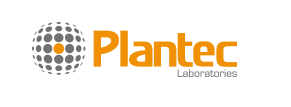Explosion at Chemical Industrial Park in Argentina
Circular Letter No. 6/2025, from the Ministry of Agriculture, is the first official distribution of pesticide registration processes, initiating the unified queue model established by Act No. 40/2025, published September 2nd. In this way, the Ministry of Agriculture now centralizes the submission and distribution of requests to Anvisa and Ibama, consolidating its role as manager of the regulatory process, as established in Law No. 14.785/2023. The published list includes organic and low-impact products, as well as formulated products with new active ingredients. (MAPA)
In compliance with court decisions, Anvisa approves toxicological evaluation of pesticides picoxystrobin (Biorisk); methoxyfenozide (GSP); trifloxystrobin technical (Prospecta); picloram + 2,4-D (Syncrom). (Official Gazette of Brazil, Res. No. 4603 – 4607 from 11/14/2025, Anvisa)
Case of resistance of Ischaemum rugosum (saramollagrass) to herbicides imazapyr and imazapic was confirmed. The resistant biotype was identified in the region of Itajaí, in the State of Santa Catarina. No similar reports have been recorded in other regions of Brazil. Continuous monitoring and good agricultural practices are recommended, including the use of certified seed, rotation of modes of action, machinery cleaning, elimination of surviving plants and early-season weed management. (HRAC-BR)
Roberto Levrero, president of Brazilian Association of Plant Nutrition Technology Industries, has been appointed to the Superior Council of the Latin American Agribusiness Academy for the 2025/26 term. (Abisolo)
Bioinputs market reached US$ 819 million in the 2024/25 season, an increase of 18% compared to the previous season. The sector, which represents nearly 5% of the crop protection market, has grown almost fourfold since 2020, driven by rising chemical resistance and the need for complementary management tools. (Kynetec)
Ministry of Agriculture has updated Brazil’s list of quarantine pests, adding Almeirim, State of Pará, as an area with cassava pest Rhizoctonia theobromae and the State of Rio Grande do Norte as an area with the grapevine pest Xanthomonas campestris. These newly identified areas must immediately adopt strict movement-control measures for host plants. (Official Gazette of Brazil, SDA/MAPA Ordinance No. 1443/2025, Ministry of Agriculture)
Anvisa published the voluntary withdrawal of 50 pesticide toxicological evaluation requests. (Official Gazette of Brazil, Res. No. 4589 from 11/14/2025, Anvisa)
The Ministry of Development, Industry, Commerce and Services presented the missions, strategic actions and indicators of the National Bioeconomy Development Plan. Among its objectives is to “expand efforts in the prospecting, conservation (ex situ, in situ, on-farm), characterization, valuation and sustainable use of socio-biodiversity assets and bioinputs”. (Official Gazette of Brazil, CNBIO Res. No. 7 from 11/07/2025, MDIC)
Anvisa rejected toxicological evaluations of Beauveria bassiana and Metarhizium anisopliae submitted by OPHICINA. (Official Gazette of Brazil, Res. No. 4592 from 11/14/2025, Anvisa)
3tentos recorded a 42.9% increase in its ag inputs revenue in the 3Q25, driven by geographic expansion in the States of Rio Grande do Sul and Mato Grosso and higher volumes of seeds, fertilizers and crop protection products for the beginning of 2025/26 season. The segment’s adjusted gross profit rose 73.3%, reflecting a recovery in commercial margins. (3tentos)
Vittia reported adjusted net profit of US$ 9.6 million in the 3Q25, an 11.9% growth over 2024. Despite the challenging agribusiness scenario and delays in pesticide sales, net revenue increased by 5%, reaching US$ 61.3 million, driven primarily by the soil fertilizer and bioinputs markets. Adjusted EBITDA had a slight increase of 0.4%, totaling US$ 15.7 million, and the company significantly expanded its operating cash generation by 130.1% year-to-date, maintaining low leverage. (Vittia)
Syngenta has opened its Cropwise platform to developers, granting access to agricultural data covering 74 million hectares in more than 30 countries, aiming to accelerate digital agriculture. (Syngenta)
Tereos has expanded the use of biological inputs in its sugarcane fields and says it has achieved savings of US$ 9.42/ha since 2018 by combining biological solutions with mineral fertilizers. According to the company’s COO, Everton Luiz Carpanezi, 70% of Tereos’ sugarcane fields now use biological products, in partnership with Koppert, including integrated management of the sugarcane weevil (Sphenophorus levis). (Tereos)
Koppert Brasil is seeking to raise US$ 115 million to build three new factories in the country and move toward financial and managerial independence from its Dutch parent company. According to co-CEO Gustavo Herrmann, the operation is being led by Itaú BBA and is part of a broader expansion plan that includes a potential medium-term IPO. (Koppert)
Around 37 tonnes of adulterated fertilizers were seized in the city of Divino, State of Minas Gerais, after technicians found a shipment of ammonium sulfate that did not match its original specifications. The Military Police confirmed the fraud in a technical report. (Military Police)
The look2agro™ networking platform has reached 50,000 names of ag companies from China, India and Brazil. (look2agro™)
UPL has confirmed new investments in Brazil. According to CEO Jai Shroff, the company continues to expand its industrial capacity in Salto de Pirapora, State of São Paulo, and allocates roughly 20% of its global investments in the country, which is around US$ 100 million per year. The company’s recent growth has been driven by strong demand for fungicides in Brazil and by a recovery in sales in Argentina. (UPL)
According to Jeferson Souza, analyst at Agrinvest Commodities, potassium chloride (KCl) prices remain higher in 2025, with CFR values ranging from US$ 80 to US$ 90/t above 2024 levels, and countryside prices in Brazil reached up to US$ 100/t higher than those paid in October of last year. Rising international costs and domestic freight pressures are driving the increase, while soybean prices in dollars remain firmer. Soybean/KCl barter ratios in the State of Mato Grosso are above 2024 levels and slightly higher than the historical average, requiring more complex strategies, such as the use of futures and options, to improve the ratio. Limited domestic supply should keep the market strong, slowing purchases for 2026/27. (Agrinvest Commodities)

Latin America
National Service of Agri-Food Health and Quality of Argentina has issued the second mandatory phytosanitary alert for controlling Lobesia botrana (grapevine moth) in the province of San Juan. Farmers must perform authorised treatments within the official deadlines, which is until November 24th for most of the province. Even farmers using pheromones must carry out complementary applications. (Senasa)
Explosion at the Spegazzini Industrial Park in Ezeiza, Argentina, began in a warehouse belonging to Logischem, a company specializing in the storage of fertilizers and agrochemical products, according to the Ezeiza Prosecutor’s Office. More than 20 companies were affected, causing severe damage to industrial facilities and nearby homes. (Ezeiza Prosecutor’s Office)
Institute for Agrarian Development inaugurated a biofactory in the municipality of Hijuelas, Chile. The project benefits local farmers by enabling them to produce their own bioinputs, biofertilizers and compost for use in crops such as kale, beans and avocado. The initiative aims to reduce costs, improve soil health and strengthen sustainable farming practices. (INDAP)
The 5th International Bio-Inputs School Mexico 2025 was inaugurated in Zautla, Puebla, bringing together representatives from 11 Latin American and Caribbean countries. The event will happen during three weeks with practical and theoretical activities in agroecology, soil management and bioinputs production. (Government of the State of Puebla)
Experts from the Institute of Ecology of Mexico, a public environmental research institute, warn that expanding potato monoculture in the Xalapa region is increasing contamination of water, soil and of local forests due to the use of dangerous agrochemicals. (Inecol)
Universidad de la República, in Uruguay, developed a robot equipped with a camera and artificial intelligence capable of detecting and tracking ants in real time. The project aims to offer a more ecological alternative to the use of pesticides for pest control. (Universidad de la República)
Ministry of Agriculture of Uruguay performed research about the use of bioinputs in agriculture. More than 1,600 farmers were interviewed and 66% of them reported using bioinputs in the past two years. The market is heavily concentrated in inoculants: 47.8% of producers used only these products. Total applications reached 759,200 hectares, with 508,900 hectares dedicated to soybeans. Among non-users of bioinputs, 40% said that lack of information was the main barrier. (Ministry of Agriculture)
Farmers from Tala, Uruguay, claim that sugar beet farming with heavy use of chemical inputs has degraded the soil, contaminated water sources and harmed the health of the local population. According to Marcelo Fossati of the National Network of Native and Creole Seeds, the region has lost its soil-water retention capacity and seen rising cases of cancer and respiratory diseases among farmers exposed without protective equipment. (Agência Brasil; National Network of Native and Creole Seeds)

READ MORE:

